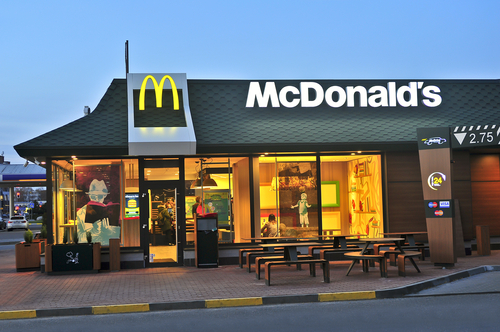Will digital signage solve McDonald’s woes?
When you are out on a road trip, is McDonald’s your first choice? I only go to McDonald’s if it’s the only choice available. My main reasons for this mindset are the low quality food, poor service and long wait times.
McDonald’s recently tried to turn all this around with a massive digital signage and kiosk upgrade to the tune of $6 billion. The restaurant plans to deliver:
- Modernized dining rooms featuring “globally and locally inspired décor.”
- Refreshed exteriors.
- New furniture.
- Digital self-order kiosks.
- Remodeled counters centered around new table service.
- Interior and drive-thru digital menu boards.
- Designated curbside pick-up spots for mobile pay customers.
- Expanded McCafé counters with larger display cases.
The real question is whether this upgrade will solve its woes. To understand that, we have to look at what digital signage and interactive kiosks can do and what they can’t do.
What they can do
Digital signage can help bring an experience into the 21st century. Customers are used to looking at screens, so deploying screens is just a way to meet their expectations.
However, the most important element in digital signage is how it can improve the customer experience and draw the customer’s eye. A bright menu board, for example can be far more pleasing to look at than a static display. The animations can draw customers’ attention to a new item on the menu or a discount, which can boost sales.
Kiosks can also deliver more seamless checkout experiences, since customers can order their food directly from the kiosk and receive a ticket for later pickup.
Digital signage is for more than just selling, however. Restaurants can use it to showcase funny videos such as from The Chive, or they can use it with interactive games in the restaurant, such as McDonald’s touch tables.
The goal of digital signage is to craft a better experience for the customer so they will come back later and engage with the brand in a deeper manner.
What they can’t do
First of all, they can’t replace employees. Many people believe that kiosks are a replacement for employees, but they actually boost demand. With kiosks, more customers can order more food, so restaurants like McDonald’s need to have more employees in the back end to meet this demand.
Second of all, digital signage and technology in general cannot revitalize a brand by themselves. If the food still tastes bad, no one will care about the fancy displays. Also, if the kiosks don’t work well with your other systems, such as mobile payments or a digital coupon, customers will go somewhere else.
For McDonald’s in particular to truly succeed, it will need more than just technological upgrades. It will also need an in-depth plan to boost quality and customer satisfaction. The restaurant needs to rethink who it hires, how much it pays them and how they train them.
Training is an area where displays can help. Displays can showcase reminders of how to make a complex product or offer cleanliness tips. But, if managers aren’t following through or slacking on training, then it won’t stick.
This is why all businesses, not just restaurants, should adopt broader strategies, which integrate the technology into the overall business and customer service strategies.
McDonald’s and other restaurants should not look at technology as a separate tool, but as an integrated part of the overall experience, which succeeds or fails based on how well the other elements of the business perform.

